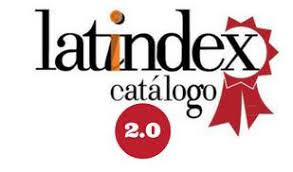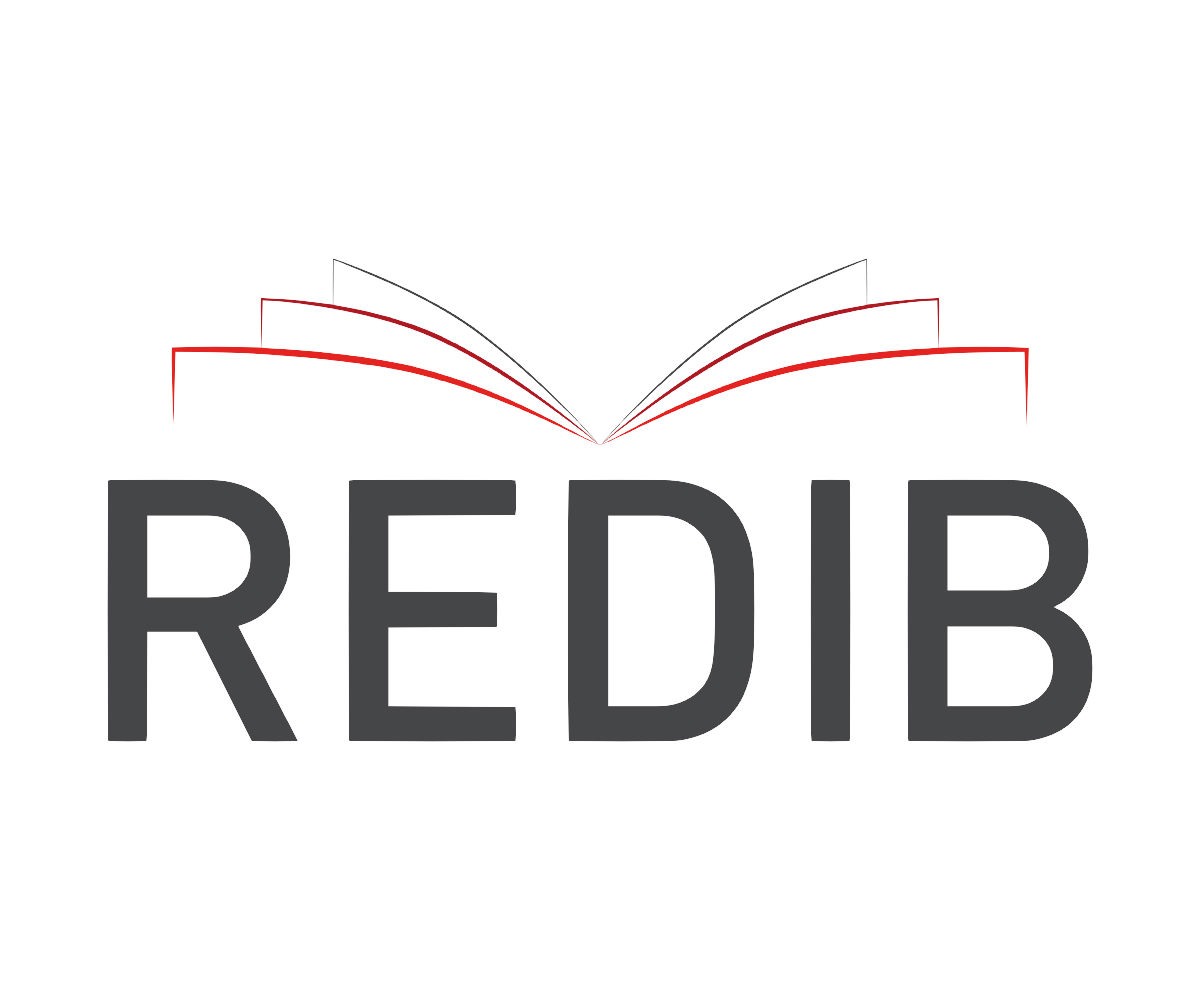Protección solar en edificaciones mediterráneas, Madrid, España: diseño con algoritmos e inteligencia artificial
DOI:
https://doi.org/10.22320/07190700.2025.15.01.05Palabras clave:
diseño paramétrico, inteligencia artificial, sostenibilidad arquitectónica, protección solarResumen
Este artículo analiza la integración de tecnologías digitales y algoritmos paramétricos en el diseño de sistemas de protección solar para edificaciones en contextos mediterráneos, como Madrid, España. Se utilizó un modelo base representativo de un edificio de escala media, se evaluaron cuatro configuraciones de protección solar mediante simulaciones avanzadas que incorporaron datos climáticos locales y trayectorias solares anuales. Las estrategias exploradas incluyen parasoles horizontales, inclinados, un diseño biomimético Voronoi y un modelo compuesto que combina estos enfoques. Los hallazgos destacan cómo la inteligencia artificial y los algoritmos computacionales permiten optimizar el rendimiento energético y el confort térmico, al tiempo que redefinen las posibilidades estéticas y sostenibles en la arquitectura contemporánea. Este enfoque propone un marco innovador para enfrentar los desafíos climáticos, que evidencia el potencial de las herramientas digitales en la transformación del diseño arquitectónico hacia un paradigma más resiliente y adaptativo.
Descargas
Citas
AGHIMIEN, E. I., LI, D. H. W., y TSANG, E. K.-W. (2022). Arquitectura bioclimática y su potencial de ahorro energético: Una revisión y direcciones futuras. Engineering, Construction and Architectural Management, 29(2), 961–988. https://doi.org/10.1108/ECAM-11-2020-0928 DOI: https://doi.org/10.1108/ECAM-11-2020-0928
AGUDELO LONDOÑO, T., MEJÍA JIMÉNEZ, I. C., y ROJAS ACEVEDO, S. M. (2015). Aplicaciones estructurales del diagrama Voronoi para la amortiguación de impactos partiendo del estudio del pericarpio y mesocarpio de los frutos cítricos [Trabajo de grado, Universidad Pontificia Bolivariana]. Facultad de Arquitectura y Diseño, Universidad Pontificia Bolivariana. http://hdl.handle.net/20.500.11912/3588
AL-SHUKRI, N. A. H., y AL-MAJIDI, B. H. (2020). Algorithmic synergy and architectural form generation mechanisms. Journal of Engineering, 26(9), 114–136. https://doi.org/10.31026/j.eng.2020.09.08 DOI: https://doi.org/10.31026/j.eng.2020.09.08
AMRAOUI, K., SRITI, L., DI TURI, S., RUGGIERO, F., y KAIHOUL, A. (2021). Exploring building’s envelope thermal behavior of the neo-vernacular residential architecture in a hot and dry climate region of Algeria. Building Simulation, 14(5), 1567–1584. https://doi.org/10.1007/s12273-021-0764-0 DOI: https://doi.org/10.1007/s12273-021-0764-0
ASGHAR, Q., JALIL, A., y ZAMAN, M. (2020). Self-organization analysed in architecture using Voronoi tessellation and particle systems. Technical Journal, 25(3), 1–10. https://tj.uettaxila.edu.pk/index.php/technical-journal/article/view/1248
ATEF, E., MEGAHED, N., ELGHEZNAWY, D., y NASHAAT, B. (2024). ‘Adaptive office buildings: improving functional flexibility in response to shifting needs using kinetic technology’. Architectural Engineering and Design Management, 20(4), 946–971. https://doi.org/10.1080/17452007.2024.2328119 DOI: https://doi.org/10.1080/17452007.2024.2328119
BETMAN, A., BALTER, J., HONGN, M., y GANEM, C. (2023). Estudio paramétrico de sistemas de parasoles para reducción del consumo energético en climas con alta heliofanía. Avances en Energías Renovables y Medio Ambiente, 27, 45-55. https://portalderevistas.unsa.edu.ar/index.php/averma/article/view/4592
BERTAGNA, F., PICCIONI, V., y D'ACUNTO, P. (2023). Geometry-based graphical methods for solar control in architecture: A digital framework. Frontiers of Architectural Research, 12(4), 754-774. https://doi.org/10.1016/j.foar.2023.02.006 DOI: https://doi.org/10.1016/j.foar.2023.02.006
BORMASHENKO, E., LEGCHENKOVA, I., FRENKEL, M., SHVALB, N., y SHOVAL, S. (2021). Voronoi Entropy vs. Continuous Measure of Symmetry of the Penrose Tiling: Part I. Analysis of the Voronoi Diagrams. Symmetry, 13(9), 1659. https://doi.org/10.3390/sym13091659 DOI: https://doi.org/10.3390/sym13091659
CHEN, Z. (2021). Application of environmental ecological strategy in smart city space architecture planning. Environmental Technology & Innovation, 23, 101684. https://doi.org/10.1016/j.eti.2021.101684 DOI: https://doi.org/10.1016/j.eti.2021.101684
DE LA HOZ-TORRES, M. L., AGUILAR, A. J., MARTÍNEZ-AIRES, M. D., y RUIZ, D. P. (2024). Seasonal field study on thermal comfort in university classrooms in Mediterranean climate. Indoor and Built Environment, 33(8), 1380-1396. https://doi.org/10.1177/1420326X241241530 DOI: https://doi.org/10.1177/1420326X241241530
DÍAZ VALDÉS, M. (2021). Application of parametric design and digital fabrication: the solution for the current crises and emergencies. Nexo Revista Científica, 34(5), 45–55. https://doi.org/10.5377/nexo.v34i05.13107 DOI: https://doi.org/10.5377/nexo.v34i05.13107
FLORES JURADO, M. V., CAIZA SIMBAÑA, M. J., JÁCOME MONAR, E. P., MOYA JIMÉNEZ, R., y RIVERA VALENZUELA, M. A. (2020). Diseño paramétrico: aplicación conceptual de la autopoiesis y diagramas de Voronoi a partir de la implementación del método adaptado de función de calidad. Tecnología & Diseño, (14), 21-37. https://revistatd.azc.uam.mx/index.php/rtd/article/view/86
GAMAL, A., NASHAAT, B., SHAHDA, M. M., y NOSIER, S. R. (2024). Ten questions concerning the integration of digital fabrication techniques into the architectural design process. Architectural Engineering and Design Management, 20(1), 120–149. https://doi.org/10.1080/17452007.2023.2269559 DOI: https://doi.org/10.1080/17452007.2023.2269559
GARCÍA MOLINA, A., DE LA HOZ TORRES, M. L., AGUILAR, A. J., NESTARES NIETO, B., y BIENVENIDO HUERTAS, D. (2024). The influence of global warming and tourism over the sleeping thermal comfort of dwellings in Granada. In M. Torres González y C. Rubio Bellido (Eds.), Towards low and positive energy buildings (pp. 225-238). Springer. https://doi.org/10.1007/978-3-031-70851-0_12 DOI: https://doi.org/10.1007/978-3-031-70851-0_12
Google Maps. (2025). Plaza España 6, Getafe, Madrid [Mapa]. Google Maps. https://www.google.com/maps
HABIB, F., MEGAHED, N. A., BADAWY, N., y SHAHDA, M. M. (2024). D4G framework: a novel Voronoi diagram classification for decoding natural geometrics to enhance the built environment. Architectural Science Review, 67(5), 437–464. https://doi.org/10.1080/00038628.2024.2321584 DOI: https://doi.org/10.1080/00038628.2024.2321584
JALALI, S. M. J., AHMADIAN, S., KAVOUSI-FARD, A., KHOSRAVI, A., y NAHAVANDI, S. (2022). Automated deep CNN-LSTM architecture design for solar irradiance forecasting. IEEE Transactions on Systems, Man, and Cybernetics: Systems, 52(1), 54–65. https://doi.org/10.1109/TSMC.2021.3093519 DOI: https://doi.org/10.1109/TSMC.2021.3093519
KOLOKOTSA, D., SANTAMOURIS, M., y YUN, G. Y. (2022). Passive solar architecture. In T. M. Letcher (Ed.), Comprehensive renewable energy (2nd ed., pp. 725-741). Elsevier. https://doi.org/10.1016/B978-0-12-819727-1.00094-7 DOI: https://doi.org/10.1016/B978-0-12-819727-1.00094-7
RAMOS-SANZ, A. I. (2019). Transformación de la construcción y la arquitectura en los últimos veinte años: prospectivas y perspectivas. Arquitecturas del Sur, 37(55), 106-125. https://doi.org/10.22320/07196466.2019.37.055.07 DOI: https://doi.org/10.22320/07196466.2019.37.055.07
RODRÍGUEZ-DE-ITA, D., y SOSA-COMPEÁN, L. B. (2024). Análisis de morfologías evolutivas con CFD: mejorar la ventilación natural en vivienda de patio central, en zonas semi cálidas de Latinoamérica. Hábitat Sustentable, 14(2), 48–59. https://doi.org/10.22320/07190700.2024.14.02.04 DOI: https://doi.org/10.22320/07190700.2024.14.02.04
SORA YANQUÉN, G. E. (2007). Visualización de superficies en 3D por medio de diagramas de Voronoi [Licenciatura en Matemáticas, Universidad Industrial de Santander]. Repositorio de la Universidad Industrial de Santander (UIS). https://noesis.uis.edu.co/items/f8be51d5-06d8-4896-8f40-d2115cd31e76
TIPÁN-RENJIFO, D. M., y TIPÁN-SUÁREZ, H. G. (2022). Hacia un diseño arquitectónico repensado desde los diagramas de Voronoi. Educación y sociedad, 20(1), 120-140. https://revistas.unica.cu/index.php/edusoc/article/view/120-140
TRUJILLO DÍAZ, A. (2016). Componente para el análisis de proximidad utilizando el diagrama de Voronoi para la plataforma GeneSIG [Tesis de Pregrado, Universidad de las Ciencias Informáticas]. Repositorio Digital Universidad de las Ciencias Informáticas. https://repositorio.uci.cu/jspui/handle/123456789/8006
URIAS-BARRERA, H. E. (2024). Comparativa y calibración de índices de confort para la temporada cálida en una ciudad semi-árida del noroeste de México. Hábitat Sustentable, 14(2), 20–31. https://doi.org/10.22320/07190700.2024.14.02.02 DOI: https://doi.org/10.22320/07190700.2024.14.02.02
WIESER, M., LÓPEZ-ALONSO, G., FLORES, M.-F., AQUINO, M., GUERRA, F., y MORENO, P. (2024). Dimensionamiento de parasoles según zonas bioclimáticas en Perú. Revista AUS, (35), 90-98. https://doi.org/10.4206/aus.2024.n35-10 DOI: https://doi.org/10.4206/aus.2024.n35-10
Descargas
Publicado
Cómo citar
Número
Sección
Licencia
Derechos de autor 2025 Marcelo Fraile-Narváez

Esta obra está bajo una licencia internacional Creative Commons Atribución-CompartirIgual 4.0.
El contenido de los artículos que se publican en cada número de Hábitat Sustentable, es responsabilidad exclusiva de los autores y no representan necesariamente el pensamiento ni comprometen la opinión de la Universidad del Bío-Bío.
Los autores/as conservarán sus derechos de autor y garantizarán a la revista el derecho de primera publicación de su obra, el cuál estará simultáneamente sujeto a la Licencia de Reconocimiento de Creative Commons CC BY-SA que permite a otros compartir-copiar, transformar o crear nuevo material a partir de esta obra con fines no comerciales, siempre y cuando se reconozcan la autoría y la primera publicación en esta revista, y sus nuevas creaciones estén bajo una licencia con los mismos términos.

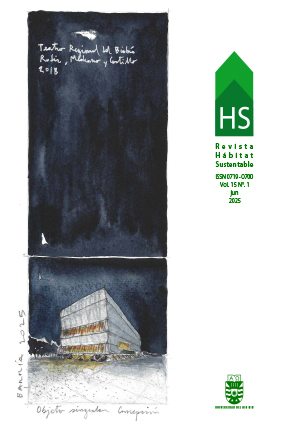
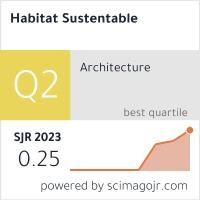


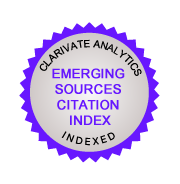





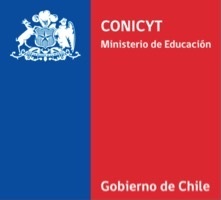 Programa de Información Científica/Concurso Fondos de Publicación de Revistas Científicas 2018/ Proyecto Mejoramiento de Visibilidad de Revistas UBB (Código:FP180007)
Programa de Información Científica/Concurso Fondos de Publicación de Revistas Científicas 2018/ Proyecto Mejoramiento de Visibilidad de Revistas UBB (Código:FP180007) 
